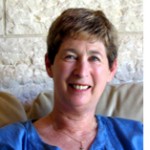
TEL AVIV (Press Release) — Yitzhak Rabin, who served as Prime Minister of Israel during two separate periods, 1974-77 and 1992-95, was a figure who towered over his generation. The first native Israeli (‘sabra’) to serve in that office, he was assassinated by an extremist right-wing Jew in November 1995, at the conclusion of a peace rally in Tel Aviv.
But the bare facts of Rabin’s life hold a deeper meaning because he seems to epitomize the history and ethos of modern Israel. Consequently, when I was invited recently to participate in a group visit to the Rabin Centre in Tel Aviv I agreed to go.
I was pleasantly surprised to find that behind the unassuming façade of the building that bears Rabin’s name lies a treasure-trove of information about Israel’s society and history that no other institution in Israel can match.
In my duties at the Information Desk of the Israel Museum I am sometimes asked by visitors from abroad whether there is any exhibition concerning the history of the State of Israel, and I must admit that in the past I have found it difficult to come up with a satisfactory answer. But now I know where to send them: to the Rabin Centre.
Rabin, who grew up in Tel Aviv, was born in 1922 to parents who were among the first Zionists to immigrate to Israel from Russia. In 1941 he joined the Palmach, rapidly rising to senior rank within the organisation that eventually formed the basis of the IDF. During the War of Independence, in 1948, Rabin fought valiantly as the commander of the Harel Brigade, leading his unit into battle and securing the road to Jerusalem. He also participated in the armistice talks with Egypt held on Rhodes.
His military career culminated in his appointment as Chief of Staff in 1964, and it was under his command that Israel’s forces defeated the combined armies of Egypt, Jordan and Syria in 1967, in the Six Day War. Rabin was one of the first Israelis to visit Jerusalem’s Old City and the liberated Mount Scopus campus of the Hebrew University.
Upon his retirement from the IDF, in 1968, Rabin was appointed Israel’s ambassador to the US, and was instrumental in obtaining the sale to Israel of advanced weaponry. During the Yom Kippur War of 1973 he acted in an advisory capacity, and was later elected to the Knesset for the Labour Party. Following the elections that unseated Golda Meir’s government he became Prime Minister. During that term Israeli forces executed the spectacular rescue of the passengers of a plane that had been hijacked by Palestinian terrorists and flown to Idi Amin’s Uganda.
The exhibition at the Rabin Centre tracks all these historic events as well as showing aspects of contemporary life in Israel and the world, even displaying a pack of the cigarettes that Rabin chain-smoked all his life. Rabin’s actual study is also on display, and it is interesting to see his taste in literature and his considerable collection of art books.
Rabin resigned from office in 1977 as a result of the revelation that his wife had retained their dollar account in the US (this was illegal for Israeli citizens at the time). In the subsequent elections Menachem Begin’s Likud party came to power, and Rabin remained a Knesset member and Minister of Defence from 1984 to 1990.
The long-standing rivalry between Rabin and Shimon Peres concluded with Rabin’s election as leader of the Labour Party in 1992 and victory in the elections that year. Rabin became Prime Minister again, and acted to attain the Oslo Accords recognising the Palestinian Authority. For that he was awarded the Nobel Peace Prize, but also became the object of criticism and vilification within Israel by those who opposed him.
By a supreme irony it was at the mass rally held in Tel Aviv to express support for the Oslo Accords and condemn violence that Rabin was assassinated. The anniversary of his death, 4th November 1995, is commemorated in Israel; many sites and monuments throughout the country bear his name, but it is the Rabin Centre, also known as the Israeli Museum, the provides the most fitting memorial.
*
Shefer-Vanson is a freelance writer and translator based in Mevasseret Zion, Israel. She may be contacted at dorothea.shefer@sdjewishworld.com